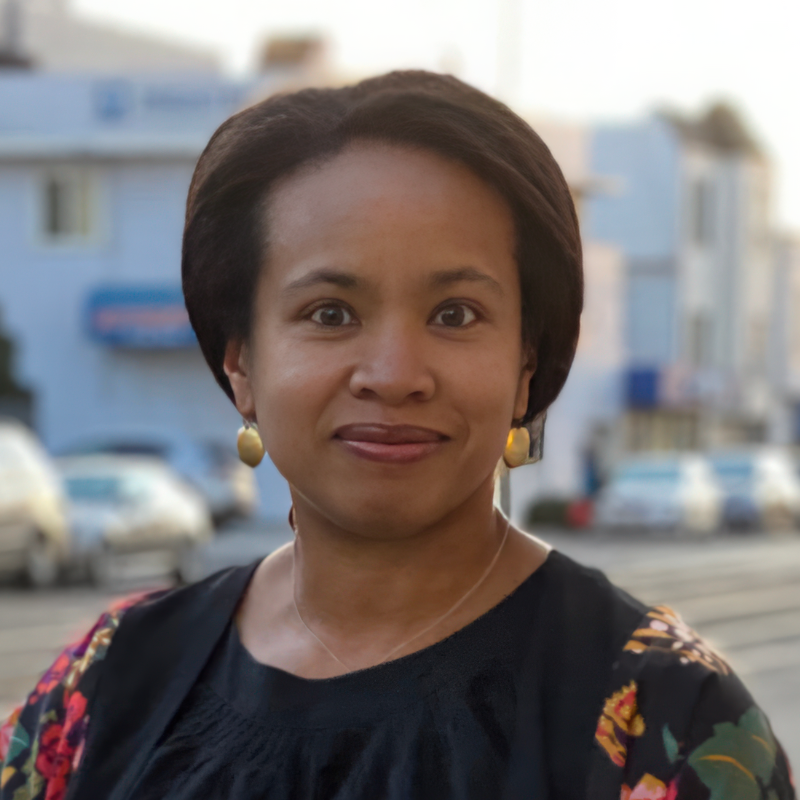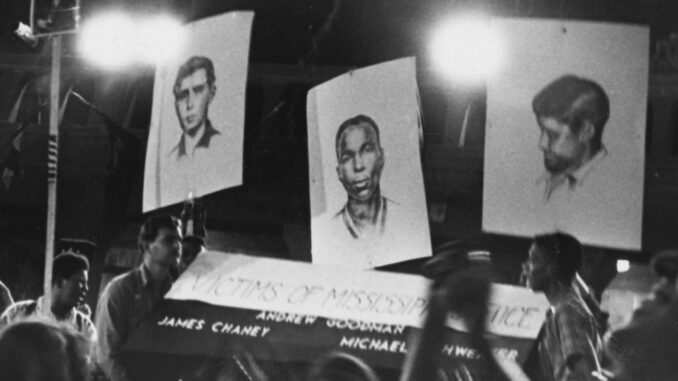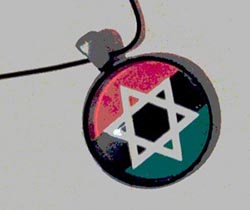Photo credit: Bob Fletcher (American, b. 1938) MFDP Celebration, Atlantic City, NJ, 1964 (printed 2024) Archival pigment print, 20 x 16 inches Courtesy of the Rubenstein Library, Duke University
It is June 21, 1964, and three young men in a station wagon are hurtling down a dirt road just outside Meridian, Mississippi. It’s pitch black dark outside, but no doubt stifling in the car, which sat out in the sun all afternoon while James Chaney, Michael Schwerner, and Andrew Goodman were detained for speeding in the Neshoba County Jail. Now, the car is shuddering over rocks and divots, sliding, kicking up clouds of dust. James Chaney has his pedal to the metal, gripping the wheel while the steering column threatens to break free.
James is driving for their lives.
The arrest was a ruse, designed to hold the three men in place while a trap—months in the making—snapped shut around Mickey Schwerner in particular. Originally from New York, Mickey and his wife, Rita, had been in Meridian, Mississippi for months, organizing and enfranchising Black voters with CORE. They worked alongside experienced Black activists like James Chaney, a lifelong Meridian resident. The relentlessly cheerful Schwerners infuriated Meridian’s white residents. They were outsiders, from New York, white people breaking bread with Black people…and they were Jews. The Schwerners tolerated slurs by day, and left their phone off the hook at night so they could sleep without being frightened by hateful calls.
This was, of course, par for the course for residents like James, a field organizer for CORE, who had everything to lose and showed unfathomable bravery in making himself visible as a local leader. Still, no one gets used to systematic oppression, from the little indignities handed down by shopkeepers and bank tellers to the vast forces of state-sanctioned violence always hovering nearby, within easy reach. With members in law enforcement and government, the Mississippi White Knights had been re-energized by the surge of Northern activists, both black and white. They were particularly animated by the virulent yet somehow vague antisemitism of racists who have never seen or met a Jew. The KKK knew who the Black activists were, were empowered to terrorize them at a moment’s notice, and often did; but Mickey was new, exotic game. They kept tabs on him through the spring of 1964, using code names and secret words, a “klavern” of sociopathic children.
Now, on this June night, the trap is sprung. Their car engines are roaring like the baying of hounds, they are running their prey to ground: James Chaney, Mickey Schwerner, and Andrew Goodman, the youngest of whom is twenty-one years old. James has lived under threat of this his whole life, which is why he knows to drive and keep on driving. Andrew, a Freedom Summer volunteer, is Jewish, too—he only arrived in Mississippi yesterday, and his first letter home is currently en route to New York. By the time it arrives, hundreds of FBI agents will be scouring the woods and creeks of Neshoba County for three missing young men.
After all, James can’t drive forever. Where, exactly, could he outrun prejudice?
The murder was a single, barbarous act made up of many smaller acts and ancient, interconnected hatreds spanning centuries and continents. James’ murder was a lynching inside a lynching, an act of racist terrorism embedded in murderous antisemitism. Or is it the other way round, making Andrew and Mickey’s murders acts of antisemitism within a broader framework of continuous, racist violence? Is there really any point in separating them? Ultimately, they come from the same source.
They died in the dark on the side of Rock Cut Road, shot by and with the collusion of local law enforcement, and were buried together—one of them alive—at Burrage’s Old Jolly Farm. We know these things—all the intricate details of their murders, the trap that was sprung around them, and the nightmare people who had a hand in their deaths—because the historical record has been meticulously preserved. FBI files, court documents, newspaper clippings, magazine stories, oral histories, census records…most are freely available, many are even online. Together, they allow each of us, if we choose, to recreate what happened. We can enter those horrors the way we choose, pass on the story, or hold it to ourselves.
For now.
As the history of the Civil Rights Movement is brutally excised from school curricula, as functionaries make blanket searches to scrub words like “diversity” and “prejudice” from scientific websites and HR portals alike, we risk losing the tools we need to recognize history when it is in danger of repeating itself. If we allow our history to be erased, and cover the parts that are inconvenient to those in power, what was once done in the dark will be done again—this time, in broad daylight.







